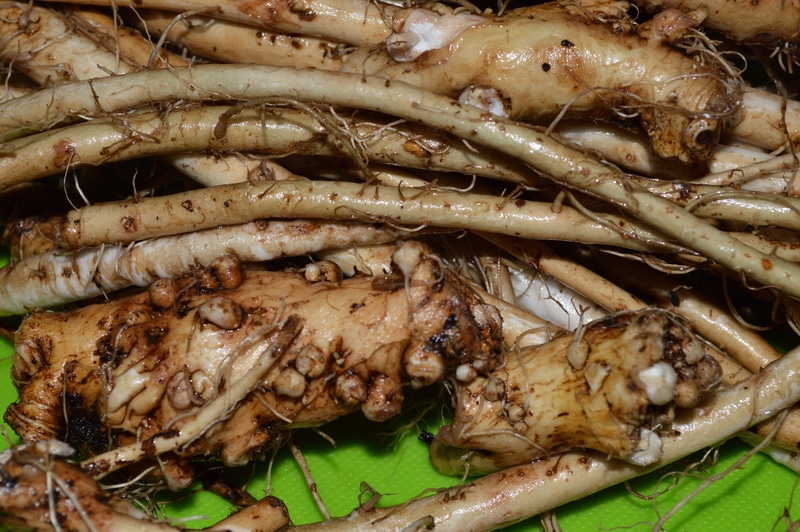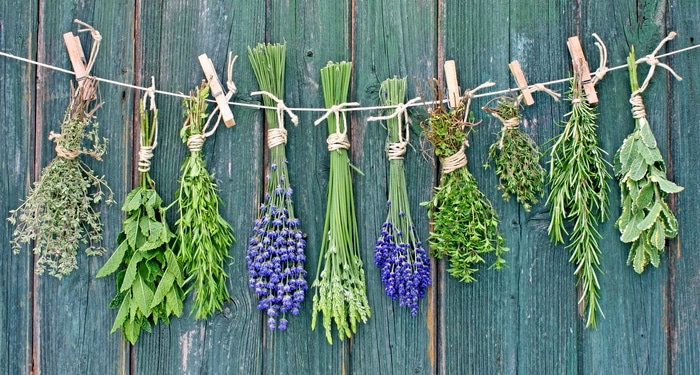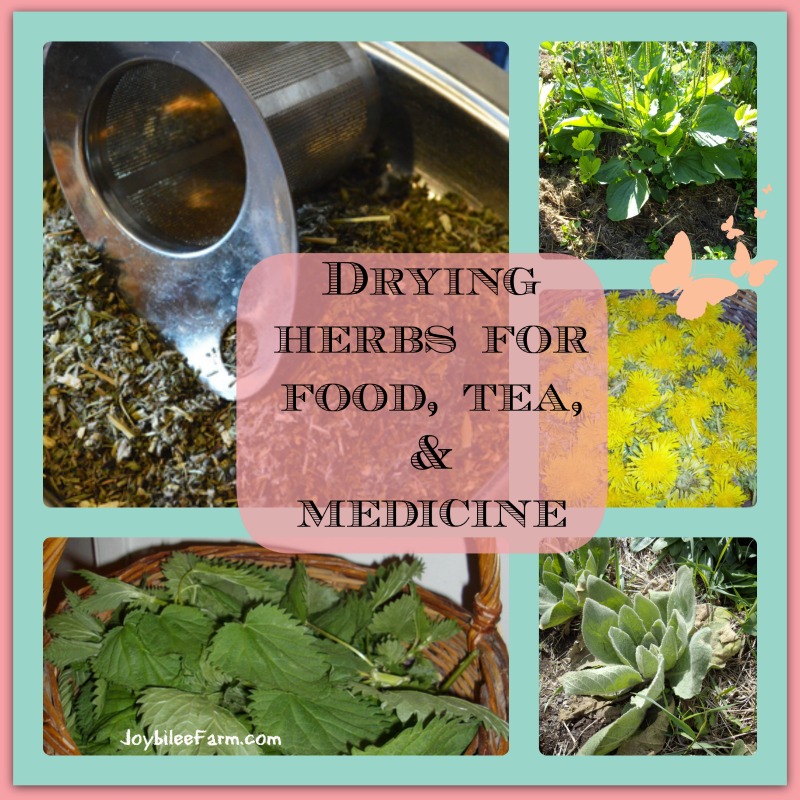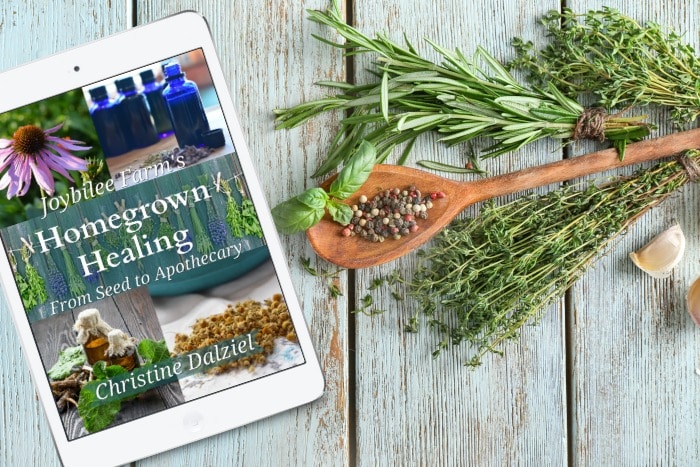How to Harvest and Dry Herbs for Food, Teas and Medicine
Different herbs are harvested at different times. Here’s how to harvest and dry herbs for food, teas and medicine.
Your How-to Guide for Harvesting Herbs, Harvesting Herbal Seeds and Harvesting Roots for Food, Tea and Medicine.
How to Harvest and Dry Leaves

Some plants like mint, oregano, lemon balm nettles, or plantain are harvested for their flavourful leaves. Leaves should be harvested just before flowering or at the beginning of flowering, while the flowers remain closed to ensure the peak of freshness and pungency.
Plants in this category should be harvested by cutting the stem with a sharp scissor, just above a two-leaf bract. The plant will send up two shoots where a single shoot was cut off. You can get several harvests during a growing season by harvesting this way before flowering.
The leaves should be dried at room temperature in an airy room, protected from insects. Gather the harvested branches in bunches and secure them with an elastic band. Each bunch should be no more than 1 inch across to allow for even drying. Hang on nails or hooks along a wall in an airy room. Allow to dry, turning occasionally. Protect from moisture or insect damage.
Once fully dry, the leaves will be crispy. You can clear the leaves from the stems with your hands and store the dried leaves in glass jars in a cool, dry, place. Crushing the leaves releases the volatile oils, so don’t fully crush the leaves until you are ready to use the herbs in teas, spices or medicine. Crush leaves by pinching them between your thumb and fingers as you use them, for the best potency.
How to Harvest Herbal Seeds
Plants like coriander and dill are grown for their pungent seeds. Seeds should be harvested when fully ripe and almost completely dried. Place them in a paper sack, with a fully secured bottom, and allow them to finish drying at room temperature, placed them inside a basket to allow full air circulation around the bag. Stir the contents of the bag once a day, until the seeds are fully dry. Then store in a glass jar in a cool, dark place. Other seeds to dry this way include rose hips, juniper berries.
How to Harvest Roots for Medicine

Dandelion and Chicory roots are harvested to be used as a coffee substitute. Other roots like woad, mahonia (Oregon Grape) and goldenseal are harvested as medicine. Roots should be harvested in the dormant season — usually after the killing frost in the Fall when the leaves of alder and maple have turned colour in your area. Wash roots completely, trim off any above-ground parts, cut into 3 to 5-inch lengths, and dry in a basket in an airy place turning often during the drying time. Fully dry roots are brittle and hard. Store them in a glass jar in a dark, cool place. For coffee, roast just before using. To use as medicine, grind the herb just before use, in teas or capsules.

Don’t use a dehydrator to dry leafy herbs. The heat will damage the volatile oils and make them less effective. An alternative to air-drying of herbs is the remove the leaves of herbal plants and spread them on a baking sheet, covered in a cloth towel. Place the baking sheet inside an oven with just the oven light on and leave for several hours. The leaves will dry by the light of the oven, with no additional heat.
Get a field guide to herbs
You should invest in a good herbal with pictures of herbs and their uses if you don’t already have one. An herbal will give you the names of the volatile oils in each herb and list other plants that contain the same volatile oil so that you can find the plants that you can grow and use them interchangeably — for instance, oregano is a very powerful immune booster and one of its volatile oils is thymus — also found in tarragon and thyme. So this gives you a hint that tarragon and thyme will have similar beneficial effects. And we find that in Rural France a tea of thyme, tarragon or oregano, with sage is used to boost the immune system.

Here are some herbals that I have used and found helpful:
The Complete Herbal Handbook for Farm and Stable
No pictures in this one but very sound reference. I refer to this book almost weekly. I especially resonate with the respect that this practitioner gives to livestock and those who live close to the land. Herbs are listed with a brief discussion of their uses and then there are chapters for each animal species with lists of their dominant ailments, allowing you to reference the right treatments quickly.
This one is a pictorial guide that is very helpful and I highly recommend it.
Complete Medicinal Herbal (Natural care)
Do you have experience drying herbs? What techniques do you use? Leave a comment.
This is the third article in a series on preserving food for winter.
The first article offers a rationale for investing time in food preservation.
The second article explains the process of drying fruits and vegetables with or without an electric dehydrator.
Learn more about using herbs for health and wellness from my Book

Homegrown Healing From Seed to Apothecary
My book Homegrown Healing From Seed to Apothecary will help you grow healing herbs in your own garden. Focusing on the easiest plants for beginners to grow, Homegrown Healing From Seed to Apothecary covers 30 plants, recommended by professional herbalists, that can be grown in the temperate zone. Initial garden preparation, garden design and harvesting tips lead the novice herbalist into early success. Choose which herbs to grow, learn how to use these herbs for your family’s health and wellness using the guidance in my book. You can find out more about this useful guide to growing more herbs and using them strategically here.





Good pintos all around. Truly appreciated.